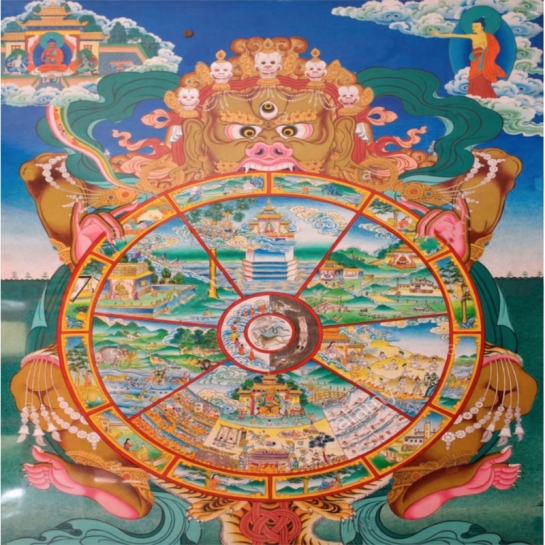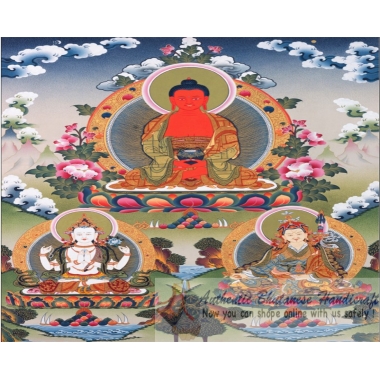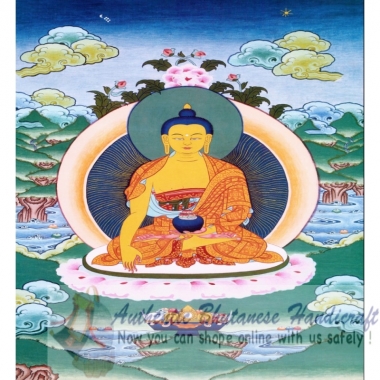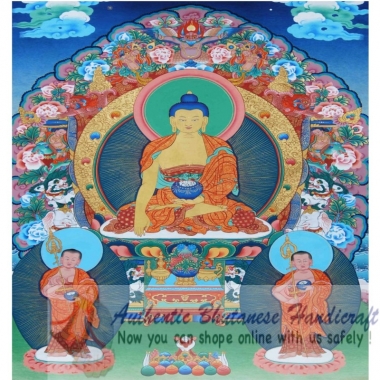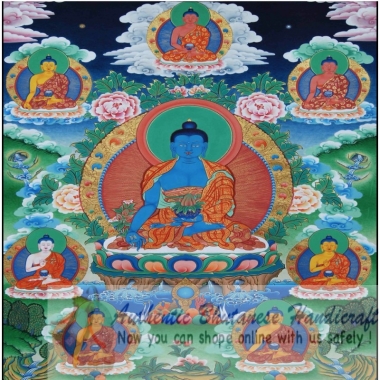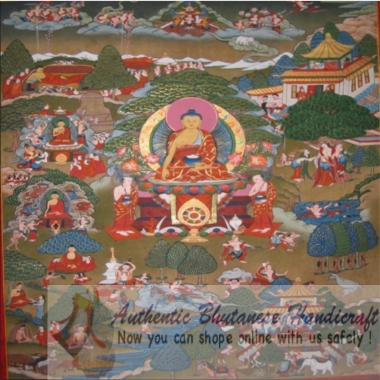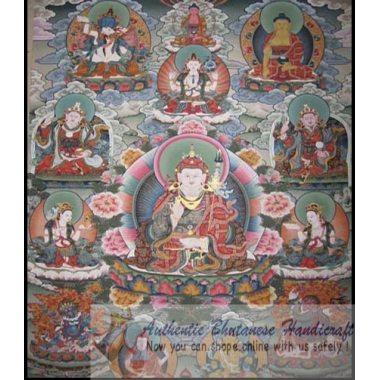Wheel of Life
The wheel of deluded existence or commonly known as the wheel of life is a classical image from the Tibetan Buddhist tradition. It depicts the realm of existence associated with the unenlightened being.
600 Items
Availability: In stock
New product
- Send to a friend
- Remove this product from my favorite's list.
- Add this product to my list of favorites.
The Wheel of Life or “Bhavacakra” is well known by Buddhist monks as a powerful meditation tool and also by students to learn and understand the teachings of the Buddha. The Wheel represents the very reasons for the suffering of our mortal form, through both horrific and sublime imagery and it can be seen painted on the walls of many Buddhist monasteries in Bhutan.
Essentially it is a metaphysical diagram made up of four concentric circles, held with a firm grip by Yama, the Lord of Death.
Above the wheel the sky with clouds or stars is symbol of freedom from cyclic existence or Samsara, and the Buddha pointing at it indicates that liberation is possible.
In the center of the wheel there are three animals symbols of the “Three Poisons”: ignorance (the pig), attachment (the bird) and anger (the snake).
The snake and bird are shown as coming out of the mouth of the pig, indicating that anger and attachment arise from ignorance. At the same time the snake and the bird grasp the tail of the pig, indicating that they both promote even greater ignorance.
Next to the central circle is the second layer divided in two-half circles, one light colored while the other is usually dark.
These images represent the wheel of Karma, the law of cause and effect.
The darker portion shows individuals experiencing the results of negative actions. The light half circle, instead, indicates people experiencing the results of positive actions and attaining spiritual ascension.
Beyond this layer is a wider area divided into six parts, each depicting a different realm of Samsara.
These six realms constitute all possible states of existence in the universe and all beings cycle between these states.
They can be divided into higher realms and lower realms.
The three higher realms are:
1). The Human Realm
The human realm is the world of everyday experience.
Human life, containing both pleasure and pain, makes us aware of both these aspects of life. Buddhism teaches that such harmonious balance give us the opportunity to pursue spiritual realization, this is the reason why human world is considered to be the most suitable realm for practicing the dharma.
2). The Semi-Gods Realm
The titans that live in this realm, not content with what they possess, spend their time fighting among themselves or making war to the gods.
These semi-gods do not suffer from desire or greed but from constant fighting and jealousy.
3). The Realm of the Gods
These gods are pictured like beings not so far from the human dimension in fact they share similar sensuous experiences.
The gods enjoy lives full of abundance and pleasure however they spend their existence pursuing meaningless distractions and never think to practice the dharma. This way they deplete their good Karma and they will suffer through being reborn in the lower realms.
The three lower realms are:
4). The Hell Realm
The hell is typically represented as a places of intense torment where beings endure unimaginable suffering. The victims are subjected to the most terrible tortures inflicted by demons.
In the Buddhist tradition there are eighteen “hells” that can be hot or cold.
5). The Hungry Ghosts Realm
This realm is inhabited by pathetic creatures with suffering from extreme and perpetual hunger and thirst.
They wander constantly in search of food and drink, however even if they get what they want it will cause them intense agony.
6). The Animals Realm
In this realm life is based on self-preservation. Animals live in constant fear and suffer from being attacked and eaten by other animals. Metaphor of refusal to see beyond the physical needs.
Depicted inside each realm, in some wheel of life representations, there is a Buddha or bodhisattva trying to help the beings living in that realm to find their way to nirvana.
The outermost concentric ring of the Wheel of Life present the process of cause and effect in detail.
The circle is divided into twelve parts, each depicting a phase of the law of Karma which keeps us trapped in the six realms of cyclic existence.
| Compositions | Rock pigments, natural colour and 24 k gold |
| Styles | Classic |
| Properties | Painted on fine cotton using natural colour. No chemical being used. |


